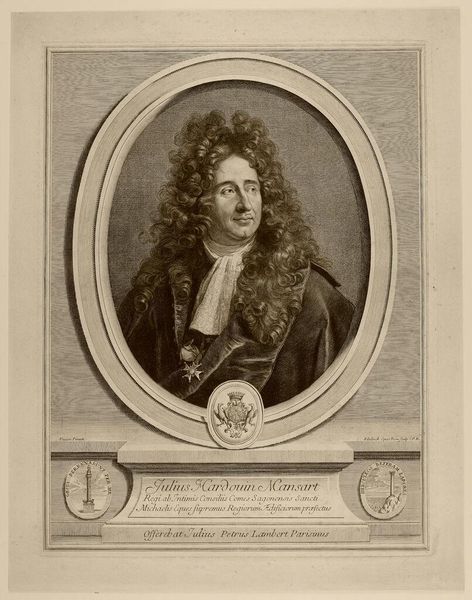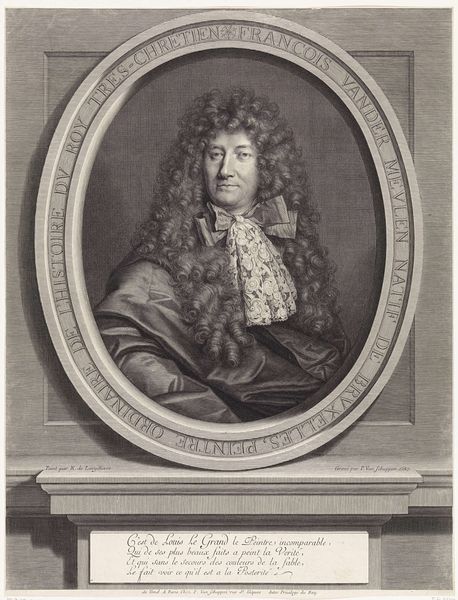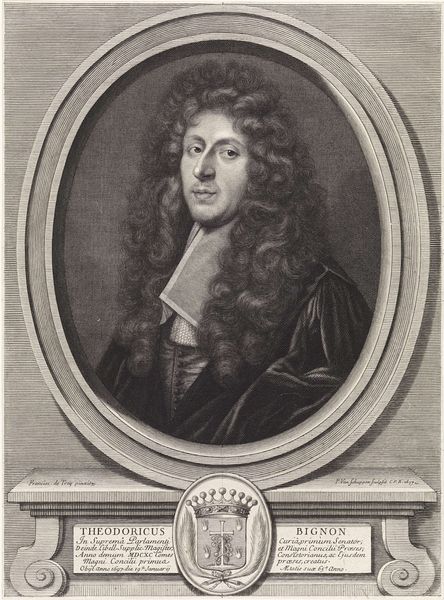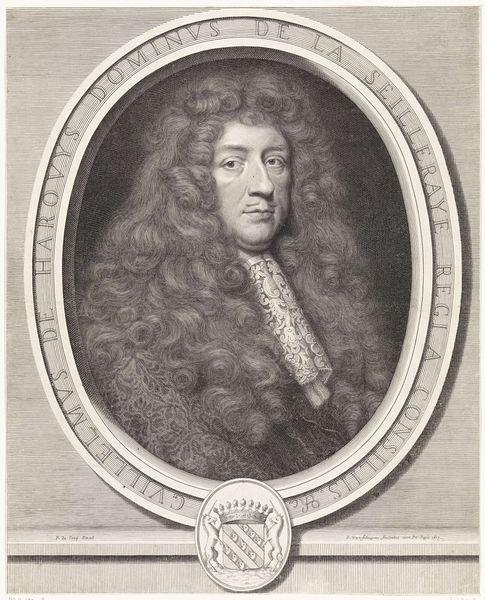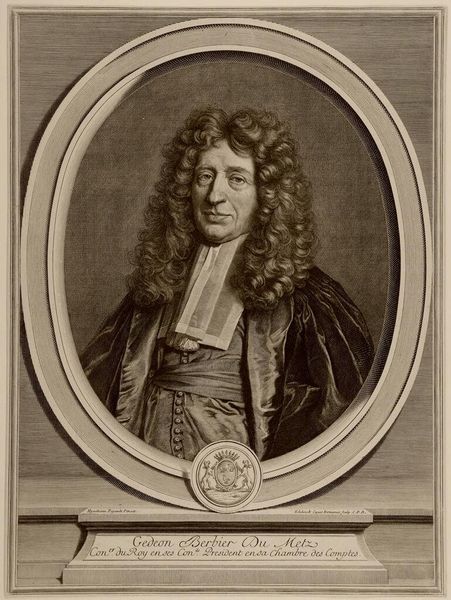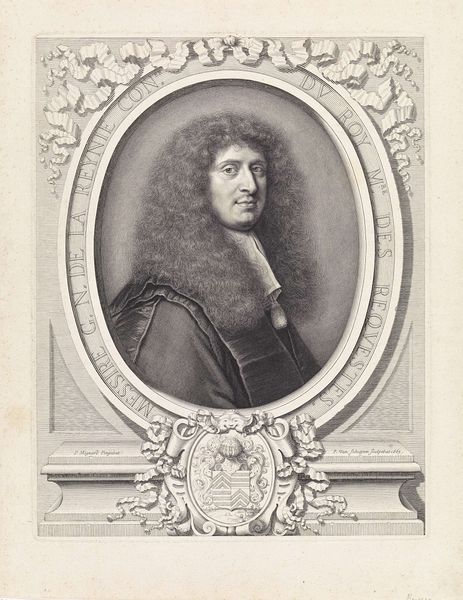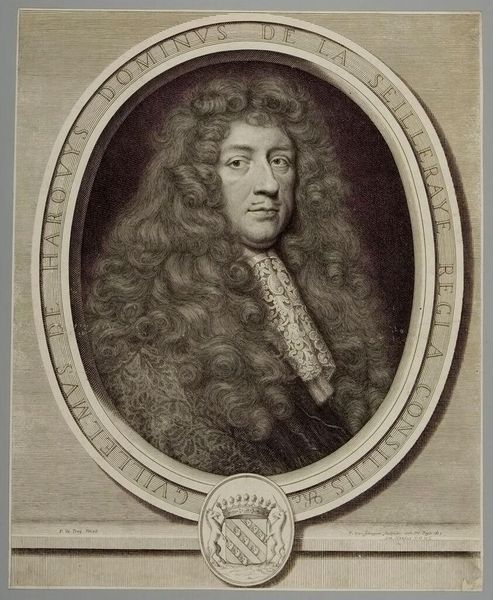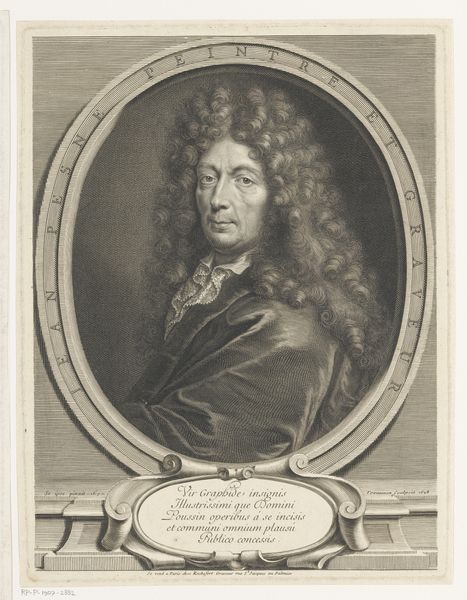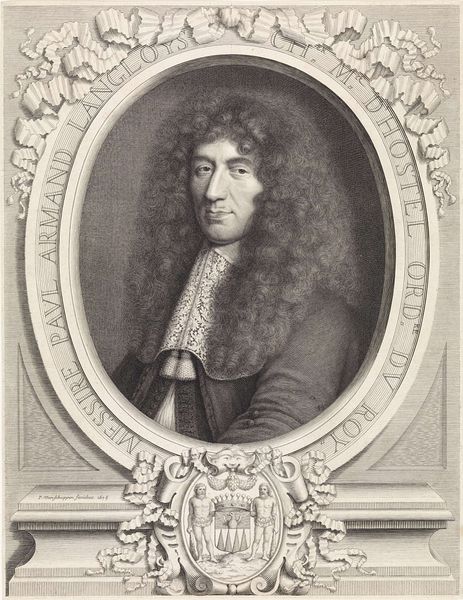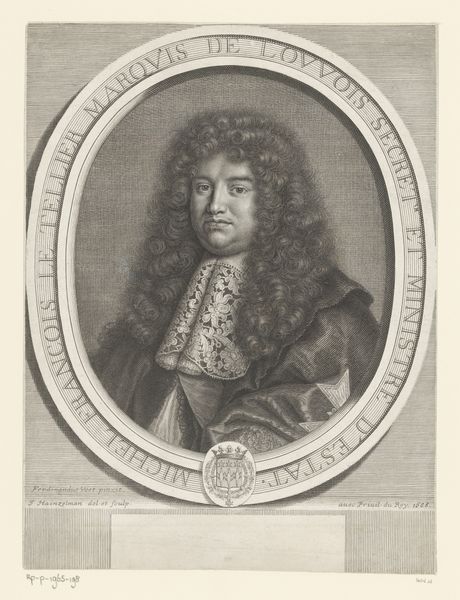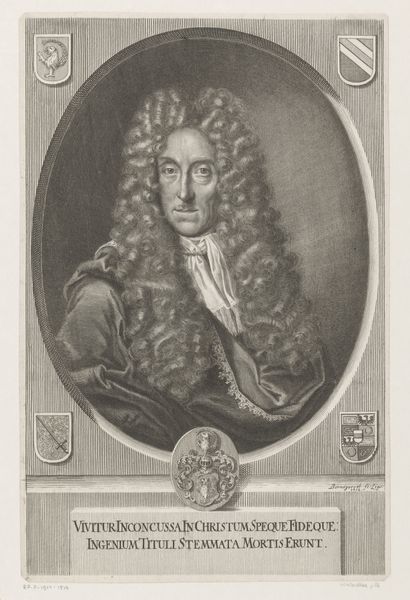
engraving
#
portrait
#
baroque
#
old engraving style
#
historical photography
#
portrait reference
#
history-painting
#
engraving
Dimensions: height 434 mm, width 331 mm
Copyright: Rijks Museum: Open Domain
Curator: This is Gérard Edelinck's engraving "Portret van Jules Hardouin Mansart," created between 1666 and 1707. It resides here at the Rijksmuseum. Editor: The intricate detail achieved purely through engraving is what immediately grabs me. There’s a remarkable textural quality, particularly in the hair; it conveys such depth despite being printed on a flat surface. Curator: Precisely. Edelinck's skillful manipulation of line and form exemplifies Baroque portraiture. Consider how the oval format frames Mansart’s face, directing our gaze towards his features. Observe the elaborate inscription and heraldic emblems below—further emphasizing compositional structure. Editor: While appreciating the engraving process, I'm equally fascinated by what isn't readily visible – the labor. Countless hours, meticulous hand work translating artistic vision. Also the economic structures supporting such skilled artisans is important. Curator: Undoubtedly. Edelinck was celebrated during his time, demonstrating proficiency. Note the contrast between light and shadow and how Edelinck achieves such nuance. The engraved line here transforms into pure light in areas, giving us this figure. Editor: To me, the value transcends technique. Mansart's identity—an architect serving Louis XIV – feels inextricably bound to this engraving's production. Think about the engraver and their social position—what level of access might Edelinck had to Mansart in order to have been able to create this portrait of him? This work showcases skill and reveals hierarchical power dynamics in its creation and patronage. Curator: Fair point. One also cannot discount that the artist elevates Mansart with that same skillful line. Without mastery of artistic design elements the portrait lacks communicative power. Editor: Certainly, formal elements amplify meaning and value in portraiture, and also obscure to elevate class systems that benefit only the wealthy few. Examining both formal elements and processes reveals layers in cultural interpretation that speak volumes to the social circumstances surrounding the production of artworks. Curator: I agree—a complex dialogue of the portrait process as an art.
Comments
No comments
Be the first to comment and join the conversation on the ultimate creative platform.
